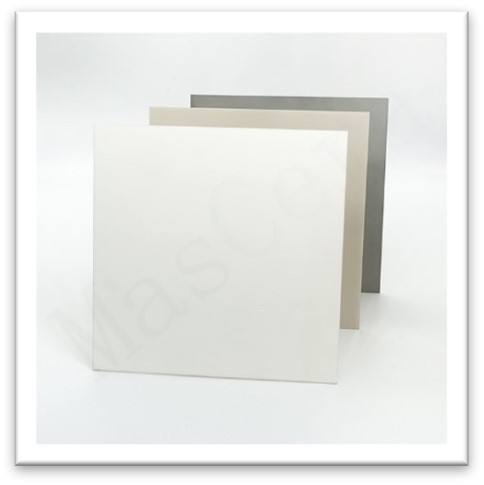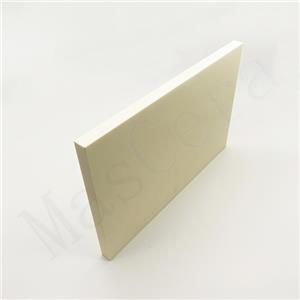Ceramic Substrates Replacing Metals in 3C Electronics: Trends and Advantages
3C Electronics—comprising Consumer Electronics, Computers, and Communication Devices—is one of the fastest-growing and most innovative industries worldwide. As devices become increasingly compact, efficient, and multifunctional, the materials used in manufacturing are subjected to higher demands. Substrates, which serve as crucial structural support and essential components in electronic circuits, play a vital role in driving the industry's progress.
Traditionally, metal substrates have been widely employed in 3C electronics due to their strength and conductivity. However, as technology evolves, limitations such as poor heat dissipation, susceptibility to corrosion, and significant weight have become apparent. These drawbacks hinder the performance and durability of modern electronic devices.
To address these issues, ceramic substrates have garnered increasing attention for their exceptional thermal, mechanical, and chemical properties. Offering advantages in heat dissipation, weight reduction, and environmental resistance, ceramic substrates have emerged as an ideal alternative to metals, driving technological transformation in the industry.
Core Properties of Ceramic Substrates
1、Physical Properties
Ceramic substrates are renowned for being lightweight yet robust, significantly reducing the overall weight of electronic devices. This is especially advantageous for portable devices like smartphones and laptops. Additionally, their excellent thermal conductivity ensures efficient heat dissipation, maintaining stable performance even in high-power applications.
2、Chemical Properties
Unlike metals, ceramic materials possess high resistance to corrosion and oxidation, making them ideal for environments with high humidity or extreme temperatures. Furthermore, their outstanding electrical insulation prevents interference, thereby enhancing the reliability of electronic components.
3、Mechanical Properties
Ceramic substrates exhibit exceptional durability, withstanding high mechanical stress and temperature variations. Their superior wear resistance ensures long-term performance, making them suitable for demanding applications such as 5G communication equipment and high-performance computing systems.
Applications of Ceramic Substrates in 3C Electronics
1、Consumer Electronics
Ceramic substrates are increasingly used in smartphones to enhance thermal management and reduce device thickness. For instance, ceramic casings not only dissipate heat efficiently but also improve the aesthetic appeal of premium models. Similarly, wearable devices benefit from ceramics' lightweight and durable nature, ensuring user comfort and reliability.

2、Computer Devices
In high-performance computing systems, ceramic substrates are utilized for heat dissipation in processors and graphic cards, ensuring uninterrupted performance. Laptops and tablets also incorporate ceramic components to achieve a balance between durability and portability.
3、Communication Devices
With the advent of 5G networks, ceramic substrates have become indispensable in base station modules, antennas, and power amplifiers. Their superior thermal and electrical properties enable them to handle the high-frequency signals and power demands of modern communication systems effectively.
Advantages of Ceramic Substrates Over Metal Substrates
1、Performance Improvements
Ceramic substrates outperform metal substrates in thermal management, providing efficient heat dissipation and minimizing overheating risks. Their excellent electrical insulation makes them ideal for high-frequency communication applications, ensuring stable and reliable performance.
2、Environmental Adaptability
Ceramic substrates excel in harsh environments, enduring high temperatures, humidity, and corrosive conditions. This adaptability extends the lifespan of electronic components, reducing maintenance and replacement costs.
3、Sustainability Benefits
The lightweight nature of ceramic substrates contributes to the reduction in device weight, enhancing portability. Moreover, ceramic materials align with the industry's shift toward green manufacturing practices, offering a more sustainable alternative to traditional metals.
Technological and Market Trends
1、Technological Developments
Advancements in ceramic substrate manufacturing techniques, such as Low-Temperature Co-fired Ceramics (LTCC) and High-Temperature Co-fired Ceramics (HTCC), have enabled greater precision and cost-efficiency. Research into new materials like alumina, aluminum nitride, and silicon nitride further expands the application potential of ceramic substrates in 3C electronics.
2、Market Trends
The global ceramic substrate market is witnessing rapid growth, driven by the increasing demand for miniaturized and energy-efficient electronic devices. With the proliferation of 5G technology and IoT applications, the use of ceramic substrates in antennas, sensors, and power modules is expected to surge. Leading companies are heavily investing in R&D to maintain a competitive edge in this dynamic market.
Ceramic substrates represent a significant advancement in the evolution of 3C electronics. Their unparalleled thermal, mechanical, and chemical properties position them as a superior alternative to traditional metal substrates. By addressing challenges such as heat dissipation, weight, and durability, ceramics are transforming the design and manufacturing of electronic devices.
Looking ahead, the adoption of ceramic substrates in 3C electronics is expected to accelerate, driven by technological progress and market demand. With companies actively developing advanced ceramic solutions, the material's potential in the industry continues to grow. As these innovations evolve, ceramic substrates will play a pivotal role in shaping the future of electronics.
XIAMEN MASCERA TECHNOLOGY CO., LTD. is a reputable and reliable supplier specializing in manufacturing and sales of technical ceramic parts. We provide custom production and high precision machining for a wide series of high performance ceramic materials including alumina ceramic, zirconia ceramic, silicon nitride, boron nitride , aluminum nitride and machinable glass ceramic. Currently, our ceramic parts can be found in many industries like mechanical, chemical, medical, semiconductor, vehicle, electronic, metallurgy etc. Our mission is to provide the best quality ceramic parts for global users and it is a big pleasure to see our ceramic parts work efficiently in customers' specific applications. We can cooperate on both prototype and mass production, welcome to contact us if you have demands.





